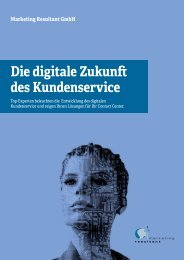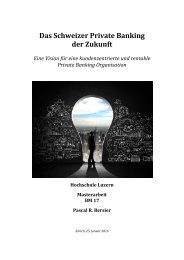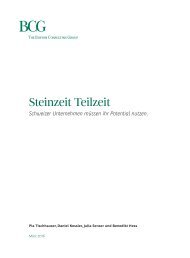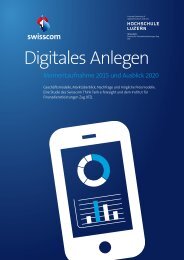Technology
tax14-technology-abo-version-lowres-151020
tax14-technology-abo-version-lowres-151020
Create successful ePaper yourself
Turn your PDF publications into a flip-book with our unique Google optimized e-Paper software.
<strong>Technology</strong><br />
Credits: arlindo71 / Getty Images, Silvia Reiche / Getty Images<br />
Wby Gerri Chanel<br />
hat would it mean to be an “outstanding” <br />
tax function? Is the idea a pipe dream or <br />
a realistic possibility? In fact, global shifts in<br />
governmental tax policy and the increasing<br />
need for the tax function to show value <br />
have made the shift from good towards<br />
outstanding not just a possibility for today’s<br />
tax departments, but a mandate. And technology is the linchpin <br />
to making it happen.<br />
New technology, new capabilities<br />
A discussion about enhancing the tax function using technology<br />
begs the question, “so what’s new?” After all, for example,<br />
automated tools that reduce reliance on duplicative, error-prone<br />
manual spreadsheets are not new. Yet surveys of the Fortune<br />
1000 indicate that more than 50% of respondents continue to use<br />
spreadsheets to calculate and consolidate their tax provisions,<br />
suggesting that certain aspects of automation may still be <br />
relatively “quick wins” for many companies on the road towards<br />
excellence.<br />
Likewise, the concept of a tax department integrating more<br />
effectively with their company’s financial reporting systems is not<br />
new either. What is new is that more powerful tax tools and ERP<br />
systems have become available. “A few years ago,” says Andrew<br />
Burman, a tax technology partner with EY in London, “tax had <br />
to accept whatever data came out of the ERP system and rescue<br />
what they could, often developing their own offline pieces of kit <br />
or putting data in Excel and playing around with it.”<br />
Now, much more powerful and flexible inherent systems in<br />
both finance and tax allow automation and the elimination of much<br />
duplicate work and provide better information to tax. A process<br />
that used to require manually wading through 50,000 or 100,000<br />
lines of data can now be an automated system with business rules,<br />
checks and balances that requires only a double-check of a small<br />
handful of invoices. “You can save substantial time and produce<br />
more powerful information,” Burman says, “while also enabling a<br />
value-added review process at the other end that wouldn’t have<br />
been possible in the same way a few years ago.”<br />
How companies use visualization software to compare VAT<br />
rates across jurisdictions is one such example. “If the VAT rate in <br />
a particular jurisdiction is 19.6%, and the average for that location<br />
is showing as 21%, a potential problem has been identified,“ <br />
says Daren Campbell, a partner in EY’s Tax <strong>Technology</strong> and Data<br />
Analytics Services.<br />
“The user can click on that jurisdiction and the data will be<br />
broken out, showing all the items where you paid more or less than<br />
the 19.6% and you can keep drilling down. Before, companies<br />
really weren’t able to do that, but with the new tools, companies<br />
can now look at every transaction.”<br />
This can lead to large refunds, he says, because the analytics<br />
often reveal that a company has paid tax where it shouldn’t, <br />
as opposed to missing tax where it should have paid. “The tools<br />
and technology have expanded to allow a better and much <br />
more efficient way to look at information. Visualizations allow us <br />
to identify outliers and quickly drill down and review and make<br />
determinations on those outliers.” ><br />
EY – Tax Insights for business leaders №14 21







